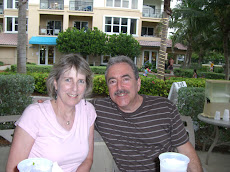
I have always loved the work of Mark Rothko in his mature years when he found the style he is most famous for painting. I like the brooding even in the brighter colors, and this was true of his life as an artist. He says of this:
"I realize that historically the function of painting large pictures is painting something very grandiose and pompous. The reason I paint them, however . . . is precisely because I want to be very intimate and human. To paint a small picture is to place yourself outside your experience, to look upon an experience as a stereopticon view or with a reducing glass. However you paint the larger picture, you are in it. It isn’t something you command!"
Many of the "multiforms" and early signature paintings display an affinity for bright, vibrant colors, particularly reds and yellows, expressing energy and ecstasy. By the mid 1950’s however, close to a decade before the completion of the first "multiforms," Rothko began to employ dark blues and greens; for many critics of his work this shift in colors was representative of a growing darkness within Rothko’s personal life.
He began to insist that he was not an
abstractionist, that such a description was as inaccurate as labeling him a great colorist. His interest was:
"only in expressing basic human emotions — tragedy, ecstasy, doom, and so on. And the fact that a lot of people break down and cry when confronted with my pictures shows that I can communicate those basic human emotions . . . The people who weep before my pictures are having the same religious experience I had when I painted them. And if you, as you say, are moved only by their color relationship, then you miss the point."
For Rothko, color is "merely an instrument." In a sense, the "multiforms" and the signature paintings are, in essence, the same expression, albeit one of purer (or less concrete or definable, depending on your interpretation) means, which is that of the same "basic human emotions," as his surrealistic mythological paintings.
"Since my pictures are large, colorful and unframed, and since museum walls are usually immense and formidable, there is the danger that the pictures relate themselves as decorative areas to the walls. This would be a distortion of their meaning, since the pictures are intimate and intense, and are the opposite of what is decorative."
At age 66 Rothko was in poor health, and friends found him following his suicide. His interesting life from Russia to the U.S. is document on the wikipedia.
In early November, 2005, Rothko's 1953 oil on canvas painting, Homage to Matisse, broke the record selling price of any post-war painting at a public auction at U.S. $22.5 million dollars.
In May 2007 Rothko's 1950 painting
White Center (Yellow, Pink and Lavender on Rose), broke this record again, selling at $72.8 million dollars at Sotheby's New York. The painting was sold by philanthropist David Rockefeller, who attended the auction.
A previously unpublished manuscript by Rothko about his philosophies on art, entitled The Artist's Reality, has been edited by his son, Christopher Rothko, and was published by
Yale University Press in 2006.
 I read about an interesting creative tool posted by Conrad Lisco on thumbjockey.com today - called Moodstream, by Getty Images. Take a look and create your mood for music and images! This is a lot of fun, too!
I read about an interesting creative tool posted by Conrad Lisco on thumbjockey.com today - called Moodstream, by Getty Images. Take a look and create your mood for music and images! This is a lot of fun, too!






















